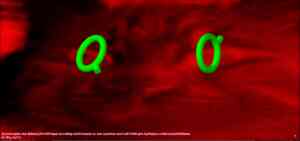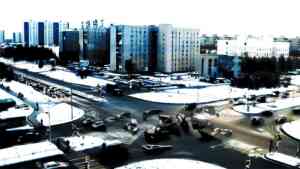The Digital Art Conundrum - how to evaluate digital art?

Computational Aesthetics
When in 2018 I was part of a committee advising on the content of a Dutch Digital Art Canon we soon found ourselves in a discussion on the range of art to consider. Digital devices have been part of developments in culture and society for decades, the arts included. They influenced, inspired, or even 'co-produced' the work of artists in performance, sculpture, robotics, sound art, and more. After much deliberation on how to acknowledge the wide scope and rich history of this field, the committee decided on using the idea of computational aesthetics, proposed by M. Beatrice Fazi and Matthew Fuller, as a conceptual grounding for the canon. It suggests an analytical way of looking at digital art in which "computation is as much a condition as it is a medium", while "acknowledging medium specificity involves reconsidering the notion of matter altogether, via the mobilization of all categories of the computational (whether sensuous, or logical, or both), and in light of the ontologies and epistemologies that computational systems initiate or participate in." Though accurate and precise, it is not easily understandable and a quite theoretical approach. To simplify their proposal: computational aesthetics offers a much-needed alternative to 'traditional' definitions of digital art as a purely technological or visual art form. It offers a broader perspective on the field.
Fazi and Fuller widen the scope of digital art to include works that do not necessarily involve computers, but originate from the same techno- and socio-cultural basis the computer1 derives from and operates in. This shared heritage makes computational aesthetics "certainly partially entwined" with the computer though. Most interestingly for the field of digital art, computational aesthetics is "founded on very specific articulations of that interlacing" in many individual works and practices.
It seems we cannot discuss the specifics of present-day art practices enough when technology or computational aesthetics are involved. With computers or 'computing machines' entering everyday life the field of digital art is indeed dissolving into a flood of works more or less fitting into the category. There is still a gap in knowledge about specifics in art involving or influenced by technology, even if it is slowly fading. Like the appreciation of most art benefits from experience and knowledge about the history of art, insight into specific art practices, and awareness of contextual issues, so does digital art gain a lot in the eye of the beholder when the observer is acquainted with these in digital art (or any art involving technology or science). Without it the richness of many works simply escapes you.
Many works of digital art have 'hidden' poetic, experimental, or critical layers that either extend on earlier art forms, such as the equally infinitely expanding conceptual art with its 'branch' of systems aesthetics, or which by nature of their use of distinctly novel technologies or scientific discoveries have no substantial precedent in art criticism and art theory. The first thing to realize therefore is that the depth or richness of works in digital art is most often not dependent on technology per se. Even when the appearance or actualization of a work is highly dependent on specific software, hardware, or media, the technology used is generally not at its core.
In my view even in the most hardcore artist tech explorations the basic incentive and key value is in the fascination for the vast intricacies of the technologies used and the universe they thus represent, or it is rather driven by the will to conquer this universe. Here we have artistic explorations of new materials pur sang, where even the first steps into a new territory can be artistically and culturally meaningful. These materials come with inherent social, economic, scientific and political histories and meaning. Rather than the relatively limited embodiment of history and meaning in for example materials like paint and canvas, the software and hardware of computing machines manifest an immense stacking or layering of histories and meaning. The layering differs per device and per system. What computational aesthetics does is reveal these histories and meaning as quite independent from physical manifestations in machines and devices, but still "entwined" with them. I present two examples from far ends of the computational aesthetics spectrum below.
Some works by Shu Lea Cheang seem fairly far removed from the digital
domain, yet they still fit the computational aesthetics category. Seeds Underground
from 2013 is one such case. A networker at heart, Cheang combines the
traditional gardener's seed exchanges with radio and internet and
physical 'seed underground parties'. Seeds Underground could be seen as a
form of media art activism. The work joins the international protests
against companies like Monsanto, which try to dominate the seed market
by making traditional seed exchanges impossible and illegal.


Seeds Underground draws parallels between the germinating of seeds and the broadcasting and sharing of information. Natural spreading of seeds through the wind resembles the distribution of networks through the ether. The seed exchange parties bring together gardener and media activist social networks, after which the distribution of seeds can be tracked via the Seeds Underground website. The seed exchange parties also seem a nice pun on other work by Cheang in the realm of underground or alternative porn. In all of her work Shu Lea Cheang easily moves between categories and disciplines, yet the investigation of physical well-being in a technological environment is always an underlying factor. Her more recent Sleep(2018-) project, coincidentally developed in collaboration with Matthew Fuller, is another case in point. In Sleep the discrediting of sleep in favor of living by machine time is examined in various performance and exhibition settings. In the work of Shu Lea Cheang the body takes central stage, while that stage is most definitely based in a post-digital world.
An example of the exploration of new territories in technology is Joan Heemkerk's Q&Q (Qliza).Q&Q (Qliza) is a curious composition.


Like in the early work of JODI, of which she is part, for Q&Q (Qliza) Heemskerk pushes the limits of what a machine can do. In this case this machine is one of the world's few prototypes of the quantum computer. The very concept of the quantum computer is controversial. While companies and governments alike generously fund the development of these post-digital alleged super computers, their potential still seems mostly fictitious. Some say quantum computers will never work.
Quantum computers are not available to the general public. Scientists can book slots to do tests long distance on machines in different parts of the world. For the first phase of the work Heemskerk collaborated with scientists André Melo and Anton Akhmerov from the Quantum Tinkerers at the technical university in Delft, the Netherlands. The title Q&Q (Qliza) brings personal and scientific histories together. Qliza refers to a quantum version of Eliza, the first chatbot to pass the Turing test. Q&Q was a 70s Dutch TV series for children revolving around two kids that extensively use various media to solve a murder case. These three aspects and more come together on quantq.net: the collaboration with the scientists, the results of feeding a chat session about the nature of quantum computing into a quantum computer prototype, the childhood memories of co-solving a mystery through the use of technology, seemingly random sudden voiceovers quoting hyper news flashes about quantum computing, a nearly undetectable picture of Schrödinger's cat, and noise piling up with each click. Instead of the high tech work one might expect from working with a quantum computer, Q&A (Qliza) is an autobiographical piece, in which the disintegrating responses of the quantum computer underscore a feeling of wonder.
Though computational aesthetics does not refer solely to digital art,
the term does offer the opportunity to review and re-evaluate
approaches and contextualization of digital art. Looking through its
lens, the outcome may surprise you.
- 1 Fazi and Fuller speak of 'computing machines', a more correct
- term since it covers all programmed or programmable devices, like also
- smart phones. I use computers for accessibility only.
- Title Picture: Still from Q&Q (Qliza)


